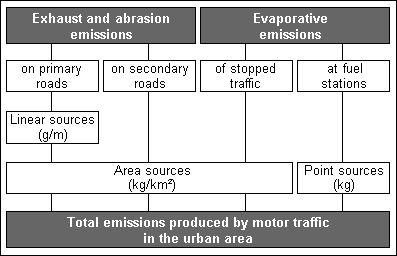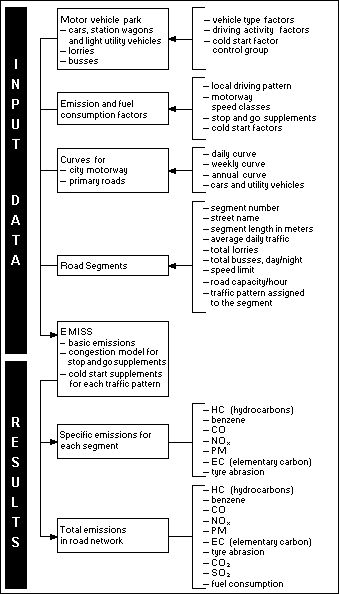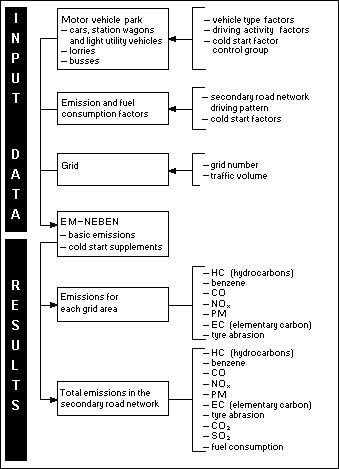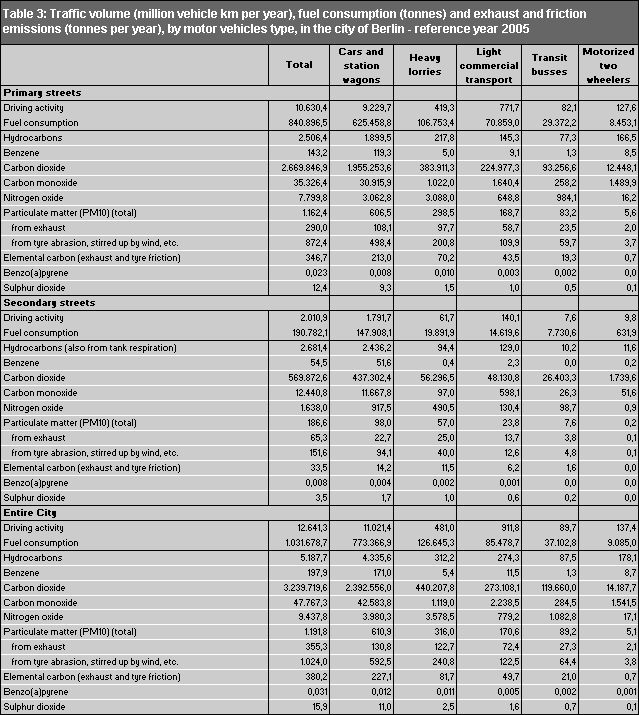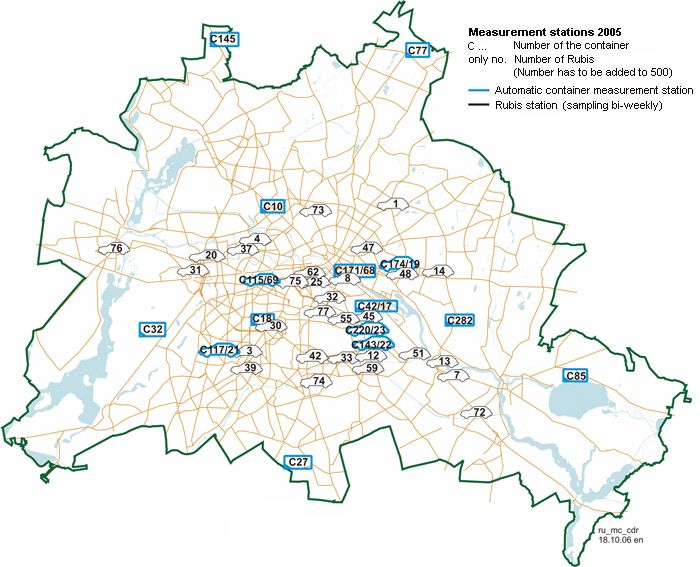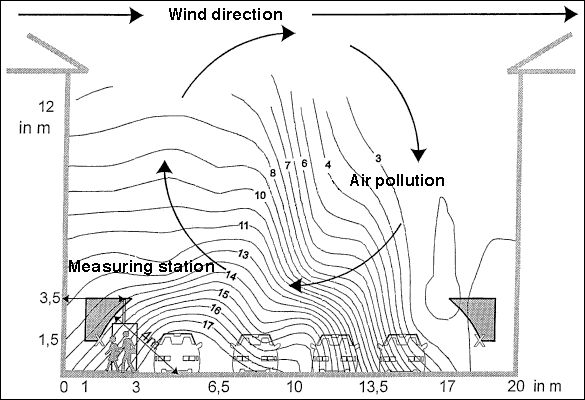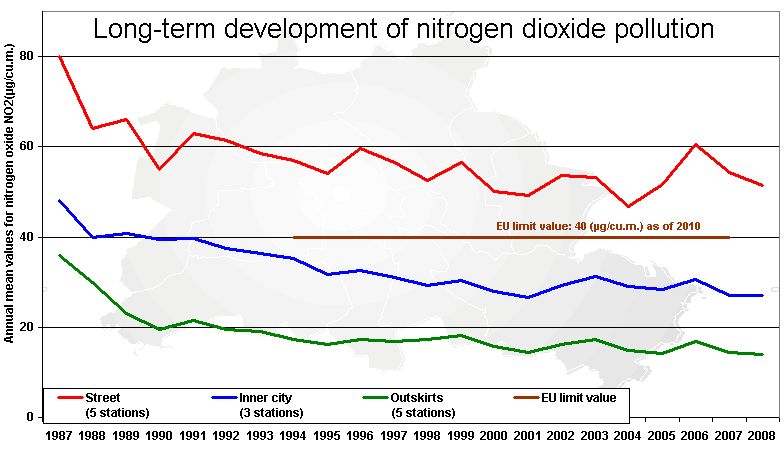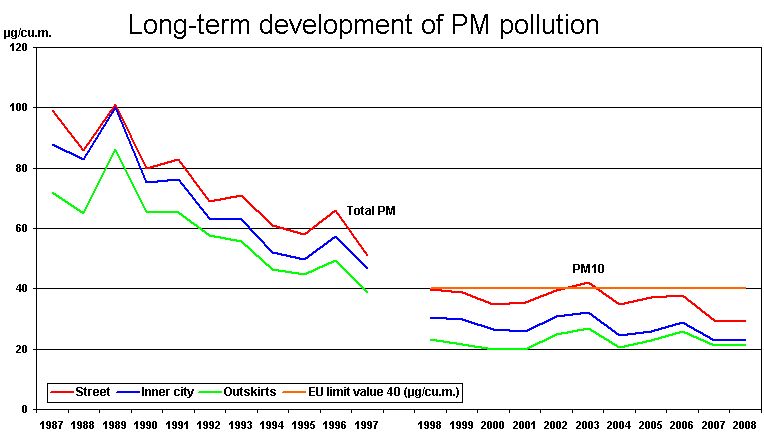Motor Vehicle Traffic Emissions Registry
The Motor Vehicle Traffic Emissions Registry was compiled anew on the basis of traffic counts for 2005, because according to experience to date, this category of polluters contributes significantly to particulate and nitrogen oxide pollution. Traffic counters have been installed at many locations on the primary roads of Berlin since 2001. This data serve to make the current traffic patterns in Berlin accessible, and to incorporate them into traffic management. This information is evaluated in the Office of Traffic Management (VMZ), and is used to inform the populace (especially drivers) of traffic conditions and provide routing recommendations to avoid traffic jams via radio broadcasts, the internet, and centrally located sign boards.
Ascertainment of Traffic Volume
Since 2002, the data from approx. 400 detectors at about 300 locations within the Berlin primary road network have been available at the VMZ. Many of these detectors distinguish between cars and lorries, and can be used for approximate annual traffic counts.
In addition for 2005, traffic count figures for cars and lorries from an official count by trained persons at many intersections ordered approximately every 5 years by the Senate Department for Urban Development were available. Compared with counts by detectors, this official traffic count has the advantage of being better able to distinguish between lorries of more than 3.5 t and other motor vehicles. Therefore, this traffic count was selected as the basis for the Emissions Registry for 2005, as the 1999 and 1994 counts had been.
The exhaust emissions were then ascertained as follows:
- The extrapolation of the point-related intersection counts to the entire Berlin primary road network with a traffic-flow computational model (VISA) by the Senate Department for Urban Development yielded the results showing the mean daily traffic figures (DTV) and the proportions of lorries for all major streets.
- The ascertainment of the segment-related pollution of the primary road network with regular bus traffic of the Berlin Transit Company (BVG) is calculated from the bus schedule data for 2005.
- The calculation of the emissions with the emission factors from the UBA manual for emissions factors (Edition 2.1, 2004) with consideration for the type of road and its function, was ascertained with the aid of the programme IMMISem/air.
Ascertainment of Emissions
The pollution emissions from motor vehicle traffic include exhaust and abrasion emissions from moving traffic, evaporation emissions from standing traffic, and evaporation emissions from fuel stations. Figure 2 provides an overview of the survey system. Emissions at fuel stations are assigned to “small business”.

